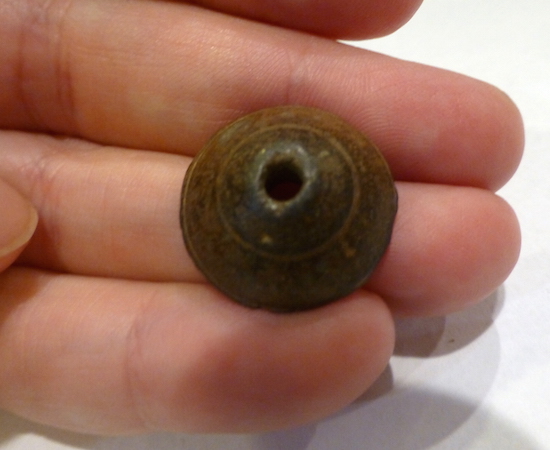Spindle Whorl

Photo: Judith Zissman
In my bag, next to my laptop and iPhone, is a spindle whorl, a tiny machine that I’ve never used. One of the first machines invented and used primarily by women, the spindle whorl is a small flywheel that attaches to a spindle and speeds the process of spinning. These small bead-like objects are found in fields, in graves, in the corners of houses, made of bone, metal, clay or glass. The oldest ones date to the fifth century or so, in civilizations from Peru to Morocco to Norway. Mine is from the Middle East, somewhere. I’m not sure exactly how old it is, maybe a thousand years. There is a faint pattern of lines and circles inscribed along each surface and some wear along the edges.
I think often about the woman who used this spindle whorl, how she fitted it to her spindle, what it looked like as the fibers flew through her hands, down to the spindle. How the weight of the whorl held the spindle true and kept a constant spin. How the fiber stretched and twisted on itself to become a thread. If she wove that thread into fabric, if she dyed it with vegetables and flowers, if she sold it at the market. What she understood about the intersections of gravity and centripetal force.
I have had her spindle whorl for more than twenty years now, most of my adult life. Perhaps longer than her adult life.
Future archaeologists will find no trace of my work. I will not be buried with my cloud-based technology platforms. Ethnomusicologists will uncover no work songs about digital strategy. A thousand years after this woman’s death, her most valuable object, her livelihood, her creative output is still here. It fits in the palm of my hand.

